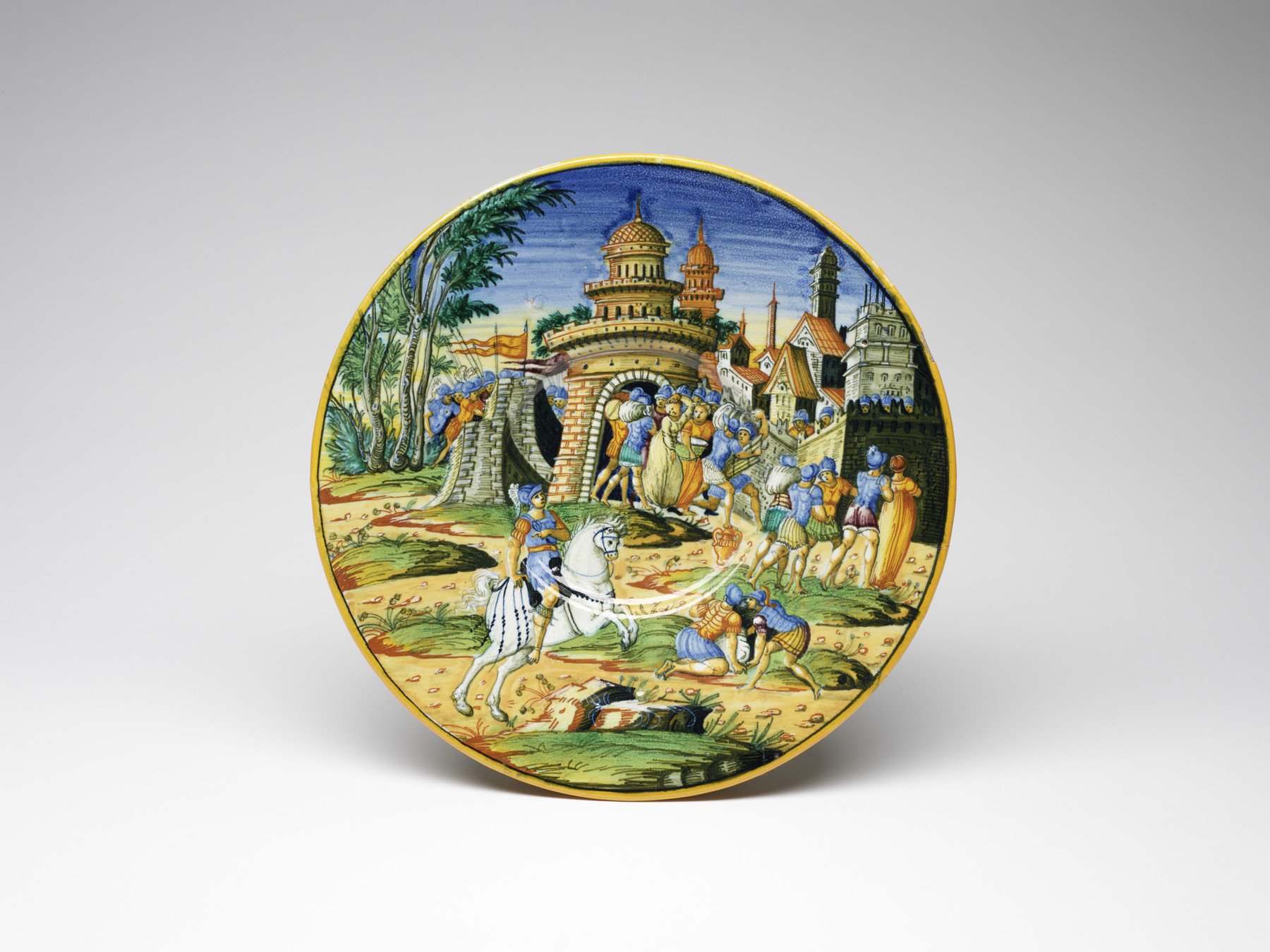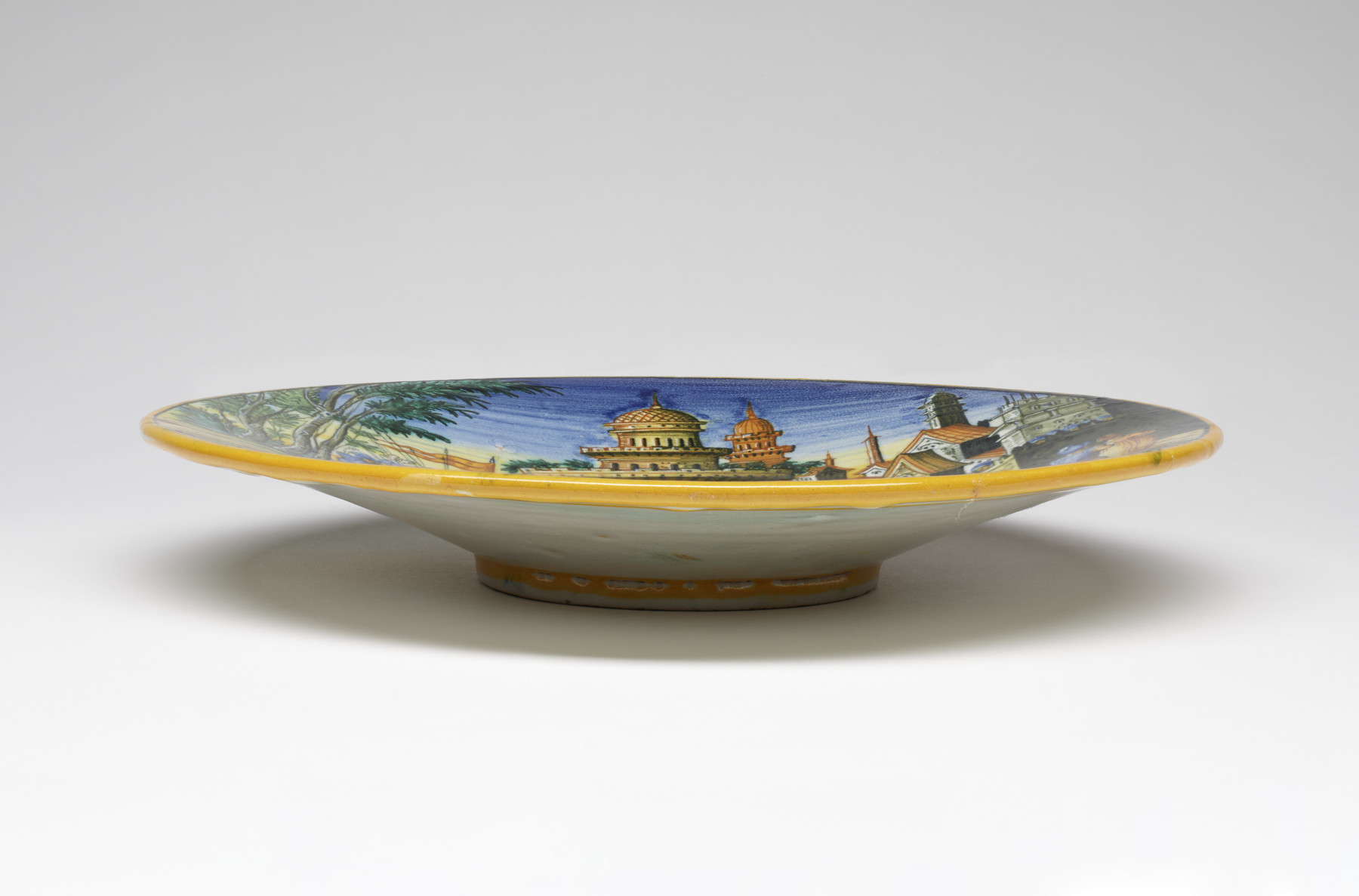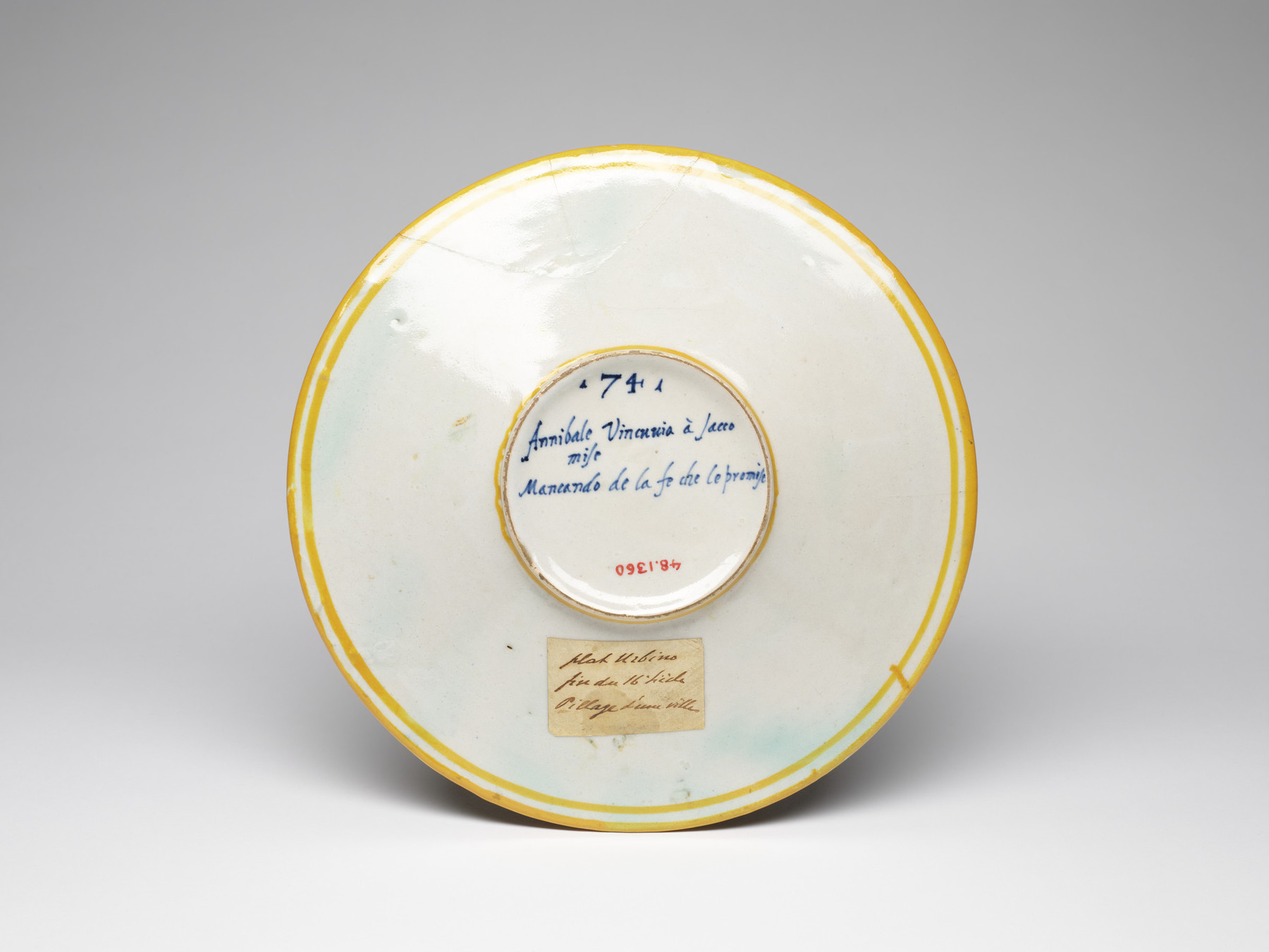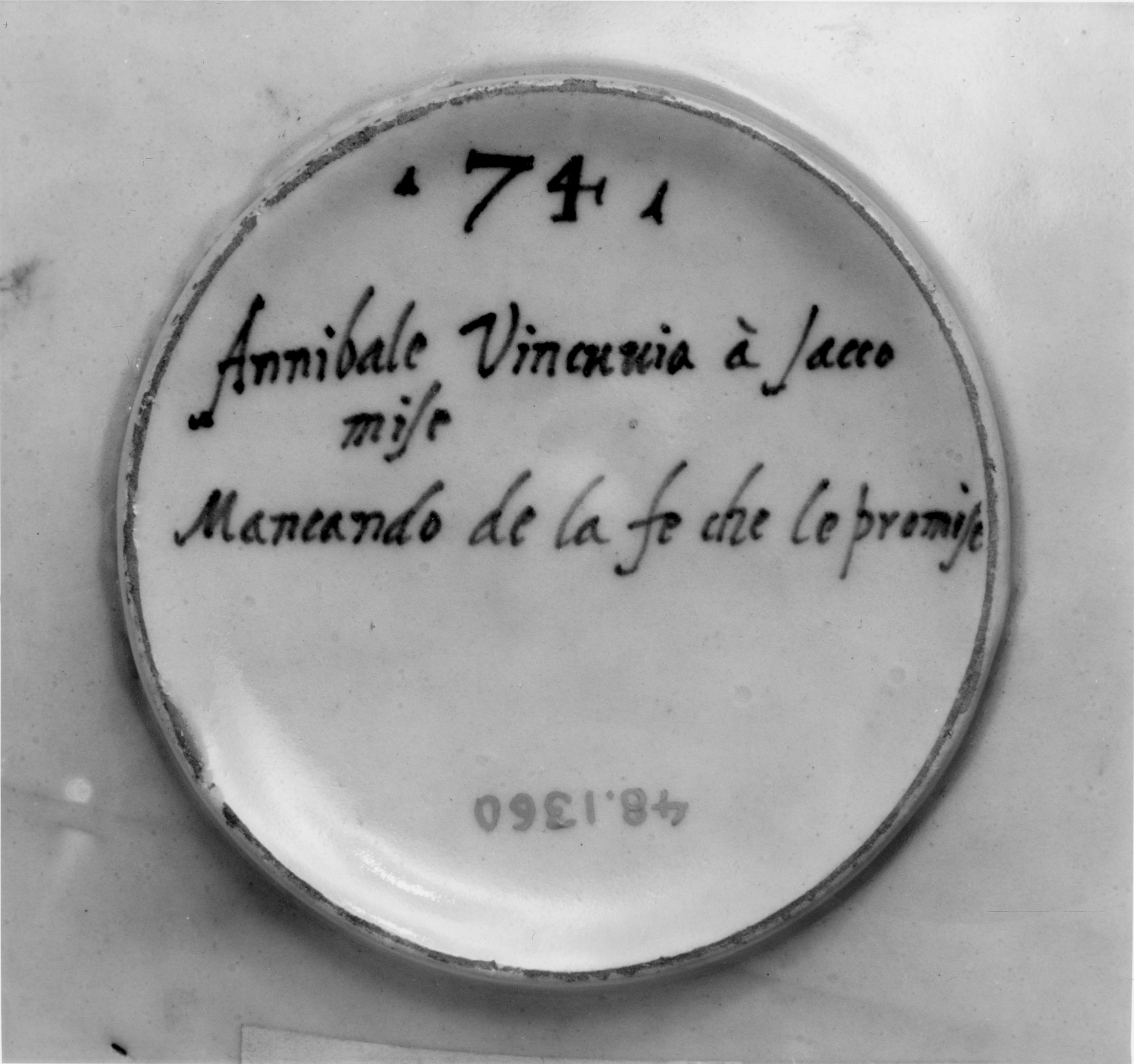Plate with Hannibal Sacking Venusia
(Renaissance Europe )
This plate is part of a large service depicting episodes from the Second Punic War (Rome’s second war with Carthage), as told in the ancient Roman historian Livy’s (59 BCE-17CE) History of Rome. The numbering on the extant pieces goes up to 141, of which this is no. 74. In the foreground, Hannibal rides a rearing white horse and moves towards the left where two soldiers are crouched. In the background, a procession of women and soldiers advance from the central portal of a stone wall. Soldiers carrying banners storm the city’s left wall, while others are visible within the city at the right. On the back, in the center of two yellow-ochre circles, a painted inscription identifies the scene illustrated on the plate’s obverse: 74/Annibale Vincuuia a sacco/mise/Mancando de le fe che le promise, roughly translatable as “ [Plate no.] 74, Hannibal put Vincuvia [Venusia] to the sack, failing in his promise.” The service, painted in blue, copper-green, yellow, ochre, manganese, grey, tan, black, and opaque white, was likely made in the workshop run by Guido Durantino, the leading workshop for “istoriato” (story telling) maiolica in Urbino from the 1530s to the 1570s. There are some indications that it may have been commissioned by a Florentine Grand Duke. To view other maiolica pieces made by Guido Durantino, click on the name in the creator field. For more on the “istoriato” style, see 48.1487; for more information on “maiolica” see 48.1336.
Inscription
Provenance
Provenance (from the French provenir, 'to come from/forth') is the chronology of the ownership, custody, or location of a historical object. Learn more about provenance at the Walters.
Henry Walters, Baltimore [date and mode of acquisition unknown]; Walters Art Museum, 1931, by bequest.
Conservation
| Date | Description | Narrative |
|---|---|---|
| 3/20/2019 | Treatment | filled; inpainted; surface cleaned |
| 3/20/2019 | Treatment | Fragments on the lower, proper left side of the plate were misaligned and covered with overpaint. They were removed, cleaned, and realigned. There were minimal losses to the glaze on the front of the plate. The reverse had a small loss that filled and inpainted. |
Geographies
Italy, Urbino (Place of Origin)
Measurements
1 7/16 x 9 9/16 in. (3.6 x 24.3 cm)
Credit Line
Acquired by Henry Walters
Location in Museum
Accession Number
In libraries, galleries, museums, and archives, an accession number is a unique identifier assigned to each object in the collection.
In libraries, galleries, museums, and archives, an accession number is a unique identifier assigned to each object in the collection.
48.1360












